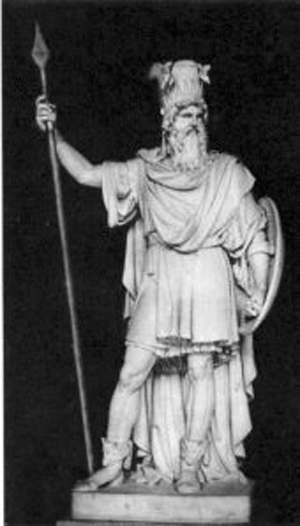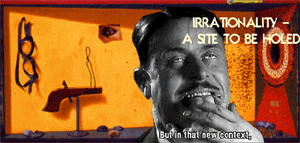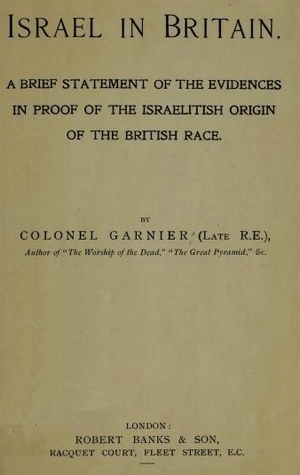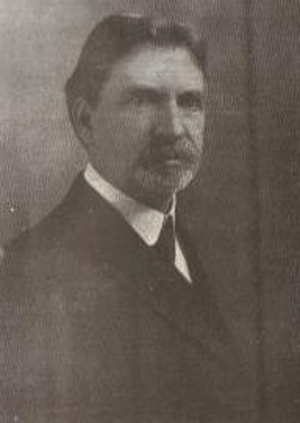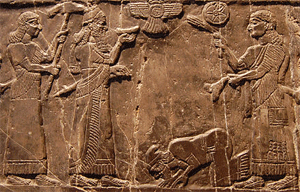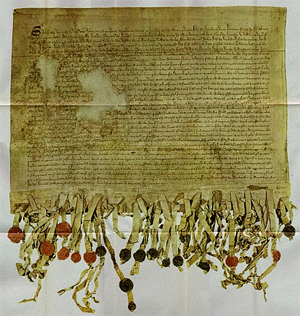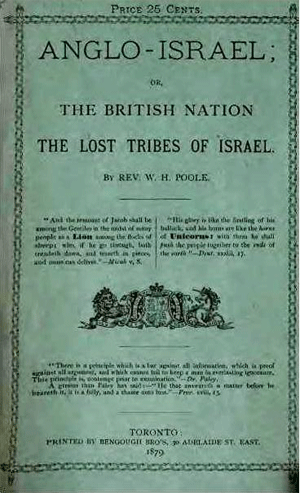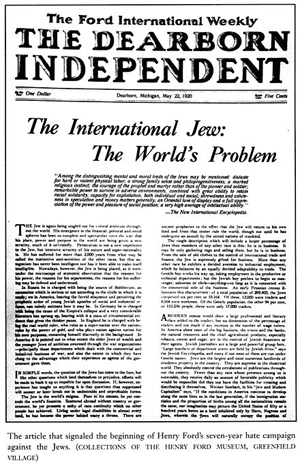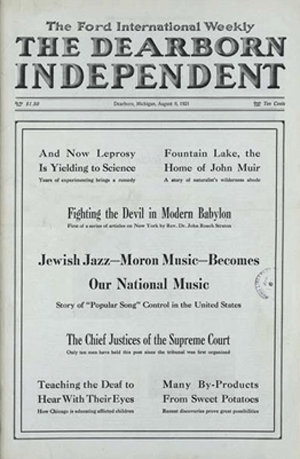by President Alfred C. Rees
Volkischer Beobachter
Berlin, Germany
April 14, 1939
NOTICE: THIS WORK MAY BE PROTECTED BY COPYRIGHT
YOU ARE REQUIRED TO READ THE COPYRIGHT NOTICE AT THIS LINK BEFORE YOU READ THE FOLLOWING WORK, THAT IS AVAILABLE SOLELY FOR PRIVATE STUDY, SCHOLARSHIP OR RESEARCH PURSUANT TO 17 U.S.C. SECTION 107 AND 108. IN THE EVENT THAT THE LIBRARY DETERMINES THAT UNLAWFUL COPYING OF THIS WORK HAS OCCURRED, THE LIBRARY HAS THE RIGHT TO BLOCK THE I.P. ADDRESS AT WHICH THE UNLAWFUL COPYING APPEARED TO HAVE OCCURRED. THANK YOU FOR RESPECTING THE RIGHTS OF COPYRIGHT OWNERS.
How would you like to live in a city that is 4,300 feet above sea level; that nestles in a broad valley, surrounded entirely by rugged, picturesque mountains, whose tops are covered with eternal snow, a veritable fortress set up by Nature, apparently intended to defy invasion either by water, land or sky?
Such a place is Salt Lake City, capital of the state of Utah, scenic centre of America, the renowned gathering place and radiating point of the Mormon church; two day's travel from New York, one day from the Pacific Coast.
As any one of us, who have visited that remarkable city, will testify, it is one of the most attractive, beautifully situated cities in all the world; clean, modern, pulsating with life and glowing with hospitality; with a history of achievement that at once challenges our admiration.
A strict surveillance was kept over the movements of any stranger in the city, and if his words or actions displeased the Mormon spies, he never got far beyond city limits on his onward journey before some sad accident befell him, which left him lying dead by the road-side. It was well when a stranger had any person to caution him against any expression of his mind against the people or their religion; above all, against their beloved institution of polygamy, for they are very sensitive on this point, hating and dreading criticism in the very thing, above all others, that provokes and invites it. In this case he might escape with nothing more terrible than the consciousness of a spy dogging his every footstep and listening to every word.
In the autumn of 1863, Mr. N. P. Langford, of St. Paul, Minnesota (the author of the "Yellowstone Articles," published a few years since in Scribner's Magazine), in company with several others, started from Montana for Salt Lake City. While on the journey they fell in with a party of Mormons, numbering eight, all men, and all bound for Salt Lake City. The two parties travelled together the remainder of the way, and became very friendly. As a natural consequence of this companionship, the talk turned upon Mormonism, and the arguments between them were frequent and interesting.
One of the Mormons, named Cunningham, was a very intelligent man, and, while contending that his was the only true faith, would argue with Langford, without showing any ill feeling -- a very uncommon thing for a Mormon to do, by the way, since they are usually so very intolerant that they will not listen to an opponent with the least degree of patience, but, at the first sign of opposition, lose temper, and, instead of fairly arguing the question, shower anathemas on the one who has dared to call their religion in question. It must be a weak position that can only be defended by vituperation.
At night, while round the camp-fire, the Mormons would sing of Brigham as "the word of the Lord," and what Langford called a "string of nursery rhymes," in which Cunningham would sing the solo, and the rest the chorus. The idea conveyed in these rhymes, was, that only in Mormonism was happiness to be found, and that they were glad that they were Mormons.
After the party arrived in Salt Lake City, Cunningham called Langford on one side, and said to him, "You boys seem to be pretty good fellows, and I do not wish you to come to harm, and will give you a word of advice. Here in Salt Lake, you must not express yourselves about Mormonism as you have when you have talked with me; for, if you do, your lives won't be worth a cent."
"Why so?" asked Langford.
"Because you will be assassinated," was the reply.
Langford thanked him, and followed his advice. Soon afterwards he mentioned the fact to a Gentile with whom he had business, who in reply said, "You must do as he says, or you will never leave the city alive. Do you see that man with a gray coat? He is a Mormon spy, and is evidently watching you, and will watch you as long as you remain in the city. I say, as your Mormon adviser did, Be on your guard."
During all the time that Langford was in the city he was followed by this man, and he said he felt sure that if one word in disparagement, or criticism, of the Mormon people, or their religion, had crossed his lips, he would have been a dead man. He followed the advice he received, however, else the readers of Scribner would not have been so charmingly entertained afterwards, as they were by his readable articles.
-- Wife No. 19, the Story of a Life in Bondage, Being a Complete Expose of Mormonism and Revealing the Sorrows, Sacrifices and Sufferings of Women in Polygamy, by Ann Eliza Young, Brigham Young's Apostate Wife
And what a tragedy lies back of this outstanding accomplishment! Less than 100 years ago, all that vast, limitless territory, encompassed by the Rocky Mountains, was the very symbol of desolation. Little was known of it. Only a few venturesome trappers entered that forbidding waste. The silence of centuries brooded over that region of violent excesses of heat and cold.
It was in this very valley of threatening starvation and death that a little band of people sought refuge in 1847, after they had been persecuted, pillaged, plundered and driven from their comfortable homes in Eastern United States by mobs of priests and politicians.
During this time my mother's sufferings were intense. Many of the houses had been burned by mobs, and she, and many other women in as severe straits as herself, were compelled to live as best they could, exposed to the wind and rain, and without any proper shelter, during almost the entire winter, with two little children, one a baby only a few months old, the other about two years old. In addition to all the discomforts of the situation, she was always in constant terror of an attack by the infuriated mobs, who were waging a genuine war of extermination with the suffering Saints. As is always the case with a religious war, the feeling was intensely bitter. The Gentiles had no charity for the Mormons, and would neither tolerate their faith nor them. The Mormons returned the hatred of the Gentiles with interest, and considering themselves the chosen of the Lord, selected by Him to the exclusion of all the rest of the world, of course argued that whatever they did could by no possibility be wrong, and they returned their ill-treatment with interest.
Although there had been, always, a strong prejudice against the Mormons in Missouri, as in other states where they had lived, it was not until after Sidney Rigdon made his famous incendiary speech, at the commencement of the foundation of the new Temple at Far-West, on the 4th of July, 1838, that the feeling broke into anything like aggressive hostilities.
Rigdon had embraced Mormonism in 1830, and had been ever since that time an ardent Saint. He was a Campbellite preacher in Ohio at the time of his conversion, which was accomplished under the teachings of Parley P. Pratt, a man who played quite an important part in the early Mormon history. Rigdon was a very fluent speaker, much revered by the Saints on account of his eloquence, which, it must be confessed, was decidedly of the "buncombe" order. For a long time he was the intimate friend and chief counsellor of Joseph Smith, was connected with him in the Kirtland Bank swindle, and escaped with him to Missouri.
It had been revealed to the Prophet Smith that another temple must be built to the Lord in the new Zion, since the one at Kirtland had been desecrated by falling into Gentile hands, and Rigdon was chosen to make the speech on the occasion of laying the first foundation-stone of this sacred edifice.
The "Champion of Liberty," as Rigdon was called by his admirers, was more bombastic and more denunciatory than usual. He surpassed himself in invective, and maddened the already prejudiced Missourians, who were only waiting for some excuse to quarrel with their unwelcome neighbors. Among other absurd things, he said:
"We take God and all the holy angels to witness, that we warn all men to come on us no more for ever. The man or set of men that attempts it, does so at the expense of their lives. The mob that comes to disturb us we will follow until the last drop of their blood is spilled, or else they will have to exterminate us. We will carry the war into their own homes and families. No man shall come into our streets to threaten us with mobs; if he does, he shall atone for it before he leaves the place. We this day proclaim ourselves free, with a purpose and determination that can never be broken. No, never! No, never!! No, never!!!"
This speech fired the excitable nature of the Saints, and they were aroused to a high pitch of warlike enthusiasm. Already, in imagination, they saw Missouri conquered, and the church in possession of the entire state. There could be no doubt of the final result, for this was the Promised Land into which they had been led by the hand of the Lord.
With the superstition which characterizes this people, they turned every accident or occurrence into some sign from Heaven, and it was always interpreted to promise success to them and confusion to their enemies. On this day of celebration the Mormons had erected a liberty-pole in honor of the occasion; in the afternoon it was struck by lightning, shivered to atoms, and fell, its flag trailing in the dust. There was rejoicing among the Mormons; that was certainly an omen of the speedy downfall of their enemies. It seems now as though if it must be considered an omen of anything that it was prophetic of the uprooting and scattering of this people, so soon was it followed by their expulsion from the state.
The feeling of bitterness between the two contending factions grew more intense daily, and each party was eagerly watching for some acts of violence from the other. The next month, at the election, the war commenced in earnest. A man named William Peniston was candidate for the legislature. The Mormons objected to him on the ground that he had headed a mob against them in Clay County. The Missourians, aware of this objection, endeavored to prevent the Mormons from voting, and a fight ensued, in which the latter proclaimed themselves victorious. Gallatin, the court town of Daviess County, was soon after burned by the Mormons. Then commenced robbing, plundering, and outrages of every kind by both parties. It was a season of the wildest confusion, and both sides were blinded with passion, and lost sight of reason, toleration, and, above all, Christian forbearance. It was a positive reign of terror. Houses, barns, and haystacks were burned, men shot, and all manner of depredations committed.
It is impossible for me to say which party was the principal aggressor; probably there was equal blame on both sides; but I have been informed that Joseph taught his followers that it was right, and "commanded of the Lord," for them to take anything they could find which belonged to their enemies, in retaliation for the wrongs which they had suffered at their hands. I can the more easily believe this to be true, because the spirit of the Mormon Church has always been that of retaliation. The stern old Mosaic law, "An eye for an eye, and a tooth for a tooth," is in full force among them, and is not only advised by the leaders, but insisted upon by them. Indeed, they have added to its severity, until now it stands, "A life for an offence, real or suspected, of any kind." In support of this they refer to the Israelites "borrowing" jewelry from the Egyptians before they took their flight from Egypt; and they quote, "The earth is the Lord's, and the fulness thereof;" and as they claim to be the Lord's particularly favored children, -- in fact, his only acknowledged ones, they seem to consider this text peculiarly applicable to the situation, and all the excuse they need to give for any irregularities in the way of appropriating other people's property. They are merely coming into their inheritance.
At all events, the people were not slow to obey the command of the Lord and the counsel of Joseph, and they displayed their spirit of obedience by laying hold of every kind of property which came within their reach. In the midst of these troubles, Joseph came out to Daviess County to a town called "Adam-ondi-Ahman," named, of course, by revelation, and meaning, when translated, "The valley of God in which Adam blessed his children;" said to be the identical spot where Adam and Eve first sought refuge after their expulsion from Eden. Upon his arrival, he called the people together, and harangued them after this mild and conciliatory fashion:" Go ahead! Do all you can to harass the enemy. I never felt more of the spirit of God at any time than since we commenced this stealing and house-burning." My parents were living at Adam-ondi-Ahman at that time, and were present when Joseph delivered this peculiarly saint-like address.
About this time the Danite bands were first organized, for the purpose of plundering and harassing the people of the surrounding country. I have been told this by a person who heard the oaths administered at a meeting of the band in Daviess County. They were instructed to go out on the borders of the Settlements, and take the spoils from the "ungodly Gentiles;" for was it not written, "The riches of the Gentiles shall be consecrated to the people of the house of Israel?"
Joseph Smith always denied that he had in any way authorized the formation of the Danite bands; and, in fact, in public he repeatedly repudiated both them and their deeds of violence. At the time of which I speak, however, Thomas B. Marsh, who was then the president of the "twelve apostles," together with Orson Hyde, who now occupies that post, apostatized. Both subsequently returned to the bosom of the church, making the most abject submission. Poor Marsh died, crushed and broken-hearted. Hyde's heart was of tougher composition, and he still lives; but Brigham will never forget or forgive his apostasy.
While both Marsh and Hyde were separated from the church, they made solemn affidavits against Joseph and the Mormons in general, accusing them of the grossest crimes and outrages, as well as of abetting the Danites and their deeds. The cowardly Apostles afterwards declared that these affidavits were made under the influence of fear. That is very probable, but at the same time there can be no real doubt that there was a larger amount of truth in what they affirmed than jealous Mormons would be disposed to admit.
The outrages committed by these Danites, and others like them, caused the expulsion of the Saints from Missouri. Joseph and about fifty of his followers were taken prisoners, and between his arrest and imprisonment, and the final exodus from the state, there was great suffering among the Mormon people.
-- Wife No. 19, the Story of a Life in Bondage, Being a Complete Expose of Mormonism and Revealing the Sorrows, Sacrifices and Sufferings of Women in Polygamy, by Ann Eliza Young, Brigham Young's Apostate Wife
Since there were no railroad connections until the late '60s, those who joined the early Mormon forces came by ox-teams and even handcarts. There are still men and women living in Utah, who, as girls and boys, covered that entire distance on foot, sustained and strengthened in all of their trials and tribulations by the knowledge that they were escaping the cruel persecutions that had been heaped upon them on account of their religious beliefs; and by the hope that peace and security awaited them somewhere in the unknown West.
This bitter, historic experience had produced out of the Mormons a determined, practical people, as a result of which, they perhaps, better than many other, can appreciate what the German people endured as they passed through their hardships.
Thus the Mormon people know what persecution and suppression mean. And the German people, who have gone through the shadow of the valley since the World War; and who have been forced to rely upon their own strength and determination, and upon their undying belief in their own ability to restore their self-respect and their merited place among the mighty in the sisterhood of nations, reveal that same progressive character, which does not shun obstacles. For that reason, to a student of Mormonism, recent developments in Germany present a most impressive study.
From the very beginning, the Mormon people took care of their poor. They saw to it that the administration of relief was always in local hands, in order to limit abuses. They provided for an intimate personal acquaintanceship between those who gave and those who received. The result of this system of Mormon relief has brought about the total absence of want and suffering among their people in every community where the established principles and rules of the church are observed. It is upon this deep rooted principle that the Mormon church is now carrying out its widely publicized and praised program of self help at a time when ten million Americans are jobless and idle, due to a departure from America's traditional economic, industrial system.
There is one case in particular which I have often heard spoken of by my mother and other Mormons, who would have disapproved of the proceedings, and even called them dishonest, had they dared; but none of them ventured to connect such an adjective as that to the Prophetic name.
At this particular time he became so very anxious for his people's welfare, and so earnest in his endeavors to "protect" their property, that he sent Captain William Walls, of Provo, with a company, to collect all the surplus stock from the settlements south of Salt Lake, and drive them into the city for safe-keeping, reserving only the necessary teams and the milch cows. The orders were very absolute to "drive every hoof that could be spared."
At Cedar City, Iron County, there were three men who as absolutely refused to give up their stock, as that was all they had to depend upon; for, being poor men, with large families, they naturally preferred to keep what property they had where they could look after it themselves, feeling certain that they would take quite as careful an interest in it as a stranger would.
The names of these rebellious men were Hunter, Keer, and Hadshead. They insisted upon defending their property, and the captain commanded them to be arrested and put in irons, and then he started with them for Salt Lake City, having previously secured all their stock. When they arrived at Parowan, they were chained together and confined in the school-house, there being no prison or jail in the place.
They were met by George A. Smith, who at that time was on a visit to the southern settlements; and he, thinking the men were treated with unnecessary harshness, ordered their irons taken off, and them set at liberty and allowed to return to their families -- without their stock, however. These men, after suffering such indignities, could live among the Mormons no longer, and they left for California.
Their stock, with a large herd of cattle collected in that vicinity, was driven to Salt Lake City, where they remained until they were in proper order for sale, when Brigham sold every one of them to pay a large debt which he owed to Livingston and Kincade, Salt Lake merchants.
This was his somewhat novel method of "protection." The cattle, to be sure, were out of the reach of the Indians, but they were equally out of the reach of their lawful owners, who neither saw them again nor any money which accrued from the sale of them.
Some of the owners ventured to ask if they might be turned in for tithing, but the inspired Prophet of the Lord replied, "No; if you had kept them, the Indians would have stolen them, and you are as well off as you would have been if I had not taken them." So was he, and several hundred dollars better off, too.
This reminds me of another instance of Brigham's faculty for "turning things to account," or, as a young Mormon quite wittily said, "taking advantage of his opportunities;" although it has nothing to do with the Indians, yet it occurred at an even earlier date, and was among the first of his notoriously dishonest transactions.
At Council Bluffs, as early as 1846, he counselled five hundred of his followers to enlist in the service of the United States; recruits being wanted at that time for the war in Mexico. They went without a question, on being assured that their families should be cared for. The church at that time was camped on the Missouri River, on its way from Nauvoo to Salt Lake.
The Mormon soldiers -- commonly called "The Battalion" -- sent all their pay to their families, to the care of Brigham Young, and he cared for it so well that the poor families never received it. John D. Lee brought the money which was collected from the soldiers, amounting to several thousand dollars, and gave it to Brigham. The families of these soldiers were, many of them, nearly starving, and all of them were very poor, needing sadly the money that their husbands had sent them; and in the face of all this destitution and suffering Brigham Young bought goods in Missouri to take out to the Valley, and if a soldier's wife ventured to ask him for anything, no matter how trifling it might be, she was rudely repulsed, usually without the slightest excuse for not giving her what was rightfully her own.
The men served in the army two years, receiving pay all the time, which Brigham pocketed, and all the time their families lived on the banks of the Missouri in the most squalid poverty, while Brigham came to Salt Lake in the most comfortable manner possible at that early day, and lived on the provisions that he had brought with him, bought with the money that was not his. He lived in what would be called luxury for the time and the place, by literally taking the bread out of the mouths of hundreds of needy women and children.
When these men came to Utah, after having been honorably discharged, they, of course, expected to find their families there. What was their surprise on learning that they were still at Winter-Quarters, and that no arrangements had been made for bringing them to the Valley! The President of the church would not allow them to go for them until the next spring, and when they did find them in such a wretched, helpless condition, it is no wonder that so many of them apostatized, and refused to believe in a religion whose chief teacher could be capable of such heartless cruelty and mean dishonesty.
It is asserted, by those who have the best means of knowing, that this war put twenty thousand dollars in Brigham Young's pocket; and yet he is very fond of talking about the cruelty and tyranny of the United States government in forcing five hundred of the ablest Mormon men into its service at a time when they were the most needed, and leaving the weak and helpless to cross the plains without sufficient protection.
-- Wife No. 19, the Story of a Life in Bondage, Being a Complete Expose of Mormonism and Revealing the Sorrows, Sacrifices and Sufferings of Women in Polygamy, by Ann Eliza Young, Brigham Young's Apostate Wife
In order to produce a sound body, Mormons have advocated and practiced, since 1830, what they call the "Word of Wisdom", which calls for the total abstinence from the use of tobacco, alcohol, tea, coffee, and for the sparing use of meat. Statistics in the United States show that, as a result of close adherence to this formula, the Mormon people are freer from contagious and hereditary diseases, than any other people in the United States; and, in fact, the world. That is why the Mormon people, perhaps, more than any other people in all the world, pay high tribute to the German government for its bold declaration of war against the use of alcohol and tobacco by the youth of Germany.
In the meantime, affairs in Salt Lake City had assumed their usual quiet. The troops were camped about forty miles from Salt Lake, in Cedar Valley. They called the station Camp Floyd. While they remained in the Territory, some of the Saints, wishing to dispose of their produce, sold a large quantity to the troops, and were well paid for it. Brigham heard of it, and the very next Sunday forbade their selling any more, and cursed all those who had had dealings with our enemies, as he called those men who had respected the honor of their government and spared the people who had so injured them.
It was not long before it was whispered that Brigham had agents in Camp Floyd selling tithing flour and lumber; taking large contracts, and obtaining large prices. But in the meanwhile he did not relax his severity towards his people. The bishops were ordered to withdraw the hand of fellowship from every person in their wards who traded at Camp Floyd. It was a sure sign of apostasy to be seen there at all, on any errand whatever; yet the church teams started from the tithing-office, loaded with flour, in the night, and it was known that Brigham received large sums of money from the government in payment.
In this, as in everything else, he was determined to have the monopoly. If there was any money to be made, he must make it. He could not endure to see a dollar go into another man's pocket. I believe the sight was positive pain to him. This incarnation of selfish greed is made absolutely miserable by the prosperity of another, and he takes speedy measures to put a stop to it, as he did in the case of Moon and Badly, the distillers, whom he sent to the south on missions, and also in the affair with Mr. Howard, whose distillery he took possession of in the same manner, after having declared that it ought to be burned down, and the machinery destroyed.
After Howard was well out of the way (in England, I think), Brigham started the distillery again in the "church's" interest, which, as he represents the church, meant himself. And over the door he placed as a sign the All-seeing eye, with the inscription, "HOLINESS TO THE LORD. ZION'S CO-OPERATIVE MERCANTILE INSTITUTION. WHOLESALE LIQUOR-DEALERS AND RECTIFIERS." His whiskey was not nearly so good as Howard's, but he got as much money for it; so what did he care about the quality?
More fortunate than either Mr. Moon or Mr. Badly, Mr. Howard returned from his mission; but he has ever since been an enemy to the Prophet, who, by the way, still runs the distillery.
-- Wife No. 19, the Story of a Life in Bondage, Being a Complete Expose of Mormonism and Revealing the Sorrows, Sacrifices and Sufferings of Women in Polygamy, by Ann Eliza Young, Brigham Young's Apostate Wife
Mormon people are proverbially practical believers, not only in the sanctity of the home, but also in large families. They are unalterably opposed to birth control, which they view as a contributing factor to the destruction of any race. The industry of men and women throughout Germany is a reminder of the proverbial attitude of the Mormon people toward work. It was Brigham Young who announced that the loafer should not eat the bread of the worker. In fact, the coat of arms of Utah is the beehive, indicative of the industry and cooperative spirit of the people.
The outside world had always been horrified by polygamy. Already in 1859, the New York Tribune’s correspondent was reporting that “No where else on the Continent of North America are white women to be seen working like slaves, barefooted, in the field. It is notorious to all here that large numbers of Mormon women are in a state of great want and destitution, and that their husbands do not pretend to provide them even with the necessaries of life.’” (Hirshson, p. 132) The New York Times pointed out in 1877 that a poor farmer with half a dozen able-bodied wives automatically possessed a loyal low-wage workforce, allowing him to act as overseer or superintendent. The women were disciplined with a whip. “Farmers with four, five, six or more wives are numerous, and it is among these people that polygamy has its greatest strength. Polygamy in Utah, especially among the rural population, is nothing more nor less than slavery, and its popularity arises almost wholly from its profitableness. It is the system of the South twenty years ago, with more lines of parallel than many of us might suspect.” (Hirshson, pp. 323-324) The twin relics of barbarism turned out to be closely linked in practice.
-- Just Too Weird: Bishop Romney and the Mormon Takeover of America: Polygamy, Theocracy, and Subversion, by Webster Griffin Tarpley, Ph.D.
Perhaps the outstanding financial system of the world for the maintenance of a religious organization is to be found in Mormonism: It is their Tithing System. A true, faithful Mormon pays to the church one-tenth of his total income for the upkeep of the church and its institutions. This has placed the church on a sound financial basis, and has made possible its remarkable expansion, growth and development and operation of its far flung educational and social institutions, all conducted under church supervision; also in the erection and maintenance of commodious places of worship, which dot and beautify the entire length and breadth of the land, in which the church has a following. Here is the application of the German ideal: Community welfare before personal welfare. Mormons are practical exponents of that wholesome doctrine.
In the early days of the church, the duty was strongly enjoined of consecrating all the possessions to the Lord; and this was not to be a figurative, but a real consecration; in which all the possessions were to be catalogued and consecrated in legal form, and the transaction authenticated by witnesses. The custodian of this property was to be a "Trustee in Trust," the community into which the faithful Saint thus entered was to be called "The United Order of Enoch," and the property was to be held for the benefit of this community.
The Saints did not take kindly to the Order, and it existed in theory merely. Within a year or two Brigham has been making the most arduous efforts to bring his followers into this community, meeting, however, with very little better success than its founders. When he first proposed its re-establishment, it was decidedly opposed in the Tabernacle, by the apostles Orson Pratt, John Taylor, and George Q. Cannon, and a regular quarrel took place; the Prophet and his dissenting followers parting, each with a firm determination not to yield to the other side. The next week the four went north on a preaching tour, and labored harmoniously together in the attempt to build up the Order.
Whoever joins this community gives all his earthly possessions into the keeping of Brigham Young. His children, too, are required to sign away all claim or title to the property; if any are too young to write, the pen is given them, and their hands guided by their elders, and they are thus deprived of their rightful patrimony; and in return for all this, the family is to be furnished with what food and clothing the officers think they require.
As Brigham and his co-workers journeyed northward, he telegraphed to the bishops of the various settlements through which he would pass, informing them what time he would visit them, and requesting them to call special meetings of the residents of their wards before his arrival, and read to them the following telegram: "I am coming north, organizing branches of the Order of Enoch; how many of you are willing to join the Order without knowing anything about it?"
In the little town of Fillmore seventy-five men responded to the call for a meeting, and, strange as it may seem, fifty of those men voted to join the "Order." They fully understood that all on becoming members were required to deed their property to the "Trustee in Trust," otherwise, "Brigham Young, his heirs, executors, and assigns," yet they decided, with full knowledge of this, to make a blind investment of all their "worldly gear," and upon the arrival of the religious Autocrat, one half of the remaining twenty-five accepted the situation, and signed their names to an agreement binding themselves to obey "Enoch's" requirements. The following were the unanswerable arguments which Brigham used to secure their conversion: "I want you to understand that the car (meaning Enoch) is rolling on. The set time of the Lord has come, and no man can stay its progress. If you do not want to be run over, jump on, or get out of the way. I do not want a part of your property, I want it all. If there are any of you who cannot abide the requirements of the Lord, I do not want you to come near me, or to speak to me. I feel as far above you as the heavens are above the earth."
Those who became members of this branch of Enoch worked well, determined to make it a success. All labored together for the interest of the Order, and were credited a certain sum, I think fifteen cents an hour. They were economical, hoping to make the books show a balance in their favor, after deducting expenses of sustaining their families. But there were so many sinecures, and so much mismanagement, that after the lapse of one single summer an investigation of affairs became necessary, and the fact became known that their divinely directed labors had not paid the running expenses of the institution. Many who had expected that the records would exhibit a balance in their favor, awoke to the disagreeable fact that they, as co-partners in the United Order, the grand scheme that was to reconcile "the irrepressible conflict between capital and labor," must discount the sum stipulated as payment for their services. And they are at present in debt for the commonest necessaries of life consumed during their short-lived experiment.
A similar condition of affairs exists wherever this gigantic swindle has been in operation. And while Brigham has been gloating over his ill-gotten gains, he has bound these poor victims more firmly to himself by the terrible bondage of debt. The wildest dissatisfaction exists, and in nearly every county the Order may be regarded as dead, and beyond even the power of Brigham Young to restore.
The Tithing System is a direct outgrowth of "Enoch." When Joseph saw that the people did not take kindly to his community plan, he found it necessary to adopt some other means of raising a permanent fund for the church, and Orson Pratt proposed that every member should every year be obliged to pay one tenth of his income, out of which the church should be supported. This plan met with the approval of the officers, and it has been continued ever since. Every town has its tithing-house, which is in charge of the local bishop. He takes charge of all the goods that are brought in, usually paying himself a handsome commission, and sees, when any quantity has been gathered, that it is transported to the large tithing-house in Salt Lake City.
This tithing-house is under the direct control of Brigham Young, and he, his counsellors and clerks, have the first choice of all the goods that are brought in; the remaining stores are dealt out as payment to the poor men who are employed by Brigham as laborers. I have seen the tithing-store beseiged by a crowd of tired, care-worn women, wives of these men, waiting for their turn to be served. Sometimes a poor woman will stand all day waiting for a sack of flour, a basket of potatoes, or a quart of molasses. Let the day be ever so cold or stormy, there she must wait, until the clerks see fit to attend to her wants.
Everything is received here in payment for tithing: hay, grain, vegetables, butter, cheese, wool, or any other product. If a man has not money, he must give one tenth of what he has. It matters little whether he can afford it; the church demands it, and "the church" gets it.
-- Wife No. 19, the Story of a Life in Bondage, Being a Complete Expose of Mormonism and Revealing the Sorrows, Sacrifices and Sufferings of Women in Polygamy, by Ann Eliza Young, Brigham Young's Apostate Wife
Among these institutions of learning of which the Mormon church is especially proud, is the Brigham Young University, located in Provo, about a two hour's drive from Salt Lake City. That institution was established under the direction of a distinguished German, Dr. Karl G. Maeser, who was born in Meissen, Saxony, joined the Mormon faith, came to Utah, and was charged by Brigham Young with the responsibility of establishing that institution. The Mormon church makes the unique claim of having been established by direct revelation from God, through the instrumentality of a young man by the name of Joseph Smith, who, though unlettered and untutored, laid down principles of conduct in the realm of religion; announced truths in the field of general science; and gave to the world a philosophy of life, that challenge the thinking of every unbiased mind.
Among the Mormons who have made notable contributions to world thought is also J. Reuben Clark Jr., a member of the First Presidency of the Mormon church. He is an acknowledged diplomat, was United States Ambassador to Mexico, and today is the head of the Foreign Bondholders Association, which represents not only the United States government, but all Americans who hold securities of foreign countries. Mr. Clark is a frequent visitor to Berlin.
Perhaps the persistent driving force and the unfailing courage of the Mormon people find explanation in their belief that man is immortal; that he lives beyond the grave; that he continues in his program of eternal progression; that divinity and complete mastery over all forces is his goal and destiny. In fact, their belief is crystallized thus; "As God now is, man may become." Mormonism sees in God a personal, living Being.

